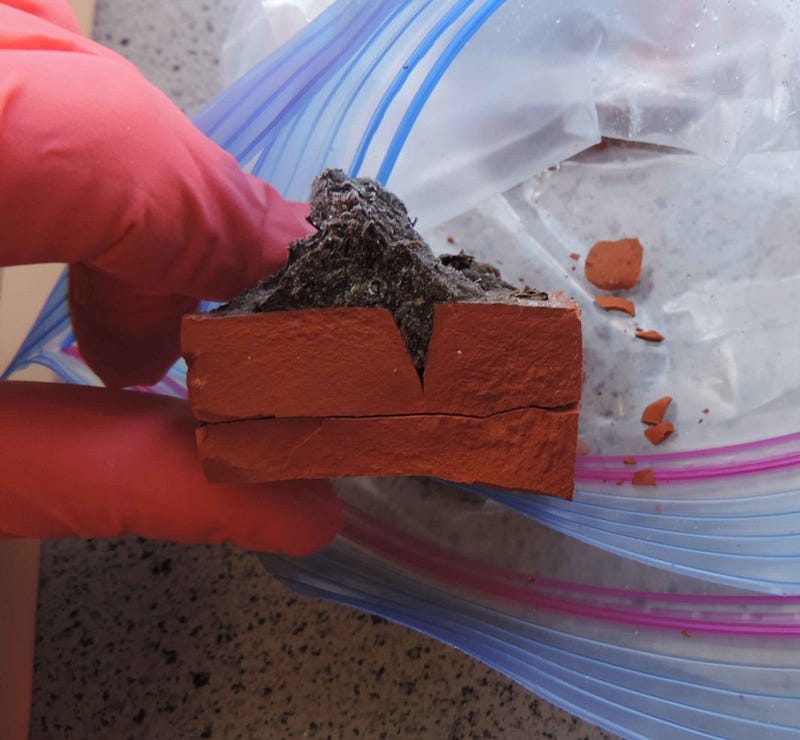The Curious Tale of an Icy Knife: A Scientific Inquiry
Written on
Chapter 1: A Strange Experiment
In a rather unusual approach to debunking the phenomenon of misinformation, researchers have investigated whether it is feasible to create a knife from frozen human feces. Their findings affirm that it is not possible.
This peculiar inquiry traces back to 1998, when Wade Davis, an anthropologist at the University of British Columbia and an accomplished author, shared an intriguing narrative relayed to him by an Inuit individual named Olayuk Narqitarvik. The tale describes an elderly man who, during the 1940s or ’50s, opted to remain solitary on the ice rather than relocate to a settlement. In an effort to convince him to move, his family confiscated all his tools. According to Davis, “In the midst of a winter storm, he stepped outside the igloo, defecated, and fashioned the feces into a frozen blade, sharpening it with saliva. He then killed a dog, using its rib cage as a sled and its hide to harness another dog, vanishing into the darkness.”
The authenticity of this story is uncertain; however, Davis has always recounted it humorously, viewing it as a representation of Inuit resilience in harsh climates. Interestingly, using feces as a tool is not entirely unheard of. For example, Danish Arctic explorer Peter Freuchen mentioned in his 1953 autobiography that he once shaped his excrement into a chisel, which he used to escape from a snow pit after it froze.

Chapter 2: Testing the Legend
Metin Eren, an experimental archaeologist from Kent State University, recalls hearing Davis share the captivating story on NPR while he was in high school. Initially amusing, Eren emphasizes that many have cited it as concrete evidence of Inuit ingenuity—something for which there is ample legitimate evidence, such as the use of fish for sled runners, as noted by Davis in correspondence.
With the rise of misinformation, Eren and his team decided to test the viability of crafting a weapon from frozen feces. His laboratory specializes in reconstructing and assessing traditional tools for durability and effectiveness. Committed to the task, Eren once nearly lost a finger while shaping a stone tool.
To prepare for the experiment, he adhered to a high-protein diet reminiscent of traditional Inuit meals for eight days. His menu included salmon, beef, and turkey, although he occasionally indulged in leftovers from his toddler's meals. “The diet was more challenging than I anticipated,” he remarks. “The first day was fantastic because I love steak. However, by the third day, I was experiencing headaches.”
The Explorer who used a Knife made of his own Poop to Escape from the Ice - This video delves into the extraordinary tale of survival, highlighting the lengths to which individuals have gone in extreme conditions.
On the fourth day, he gathered the necessary “raw material,” shaping it into knives using either hand tools or a ceramic mold, then freezing the creations at -20 degrees Celsius. Eren made every effort to ensure the success of his experiment, including maintaining a cold environment for the knife and sharpening it meticulously. However, when he attempted to cut through an animal hide, the knife failed miserably, melting instead of slicing through. “It was akin to using a brown crayon,” Eren quips.
The practice of archaeologists examining feces isn’t new; many study coprolites—fossilized or preserved feces—to gain insight into the diets of ancient animals or humans. For instance, Neanderthal coprolites have provided evidence regarding their dietary habits, revealing instances of worm infections.

Chapter 3: The Cultural Significance
The outcomes of Eren’s research do not diminish the significance of Narqitarvik’s narrative or Davis’ retelling; such anecdotes convey valuable lessons about Inuit cultural values. “From the storyteller’s perspective, there might not be a strong focus on the distinction of literal truth,” suggests Henry Huntington, an independent expert in Indigenous Arctic knowledge. “It could serve as a lesson in resourcefulness—the notion that options are never truly exhausted.”
“The fundamental purpose of the anecdote,” Davis explains in an email, “is to highlight that the Inuit embrace the cold and utilize it to their advantage. This is undeniably accurate.”
Brendan Griebel, an independent Arctic archaeologist based in Nunavut, Canada, notes that traditional Inuit stories often incorporate humor through sexual or bodily references, enhancing their storytelling quality. “As with any culture, this element adds to the richness of the narrative.”
Eren acknowledges the humor inherent in his findings but also points out that some, including The Arctic Institute, have presented the story as factual. The repercussions of using unverified claims to bolster even positive assertions can be detrimental, he warns. “When unsupported anecdotes are employed to validate a viewpoint—regardless of its merit—it can lead to a slippery slope, opening the door to other unverified claims that may be harmful or discriminatory.”
Despite the comedic aspects of his study, Eren emphasizes the important underlying message. “While many might find my paper amusing (along with the puns it inspires: ‘our data collection was regular’), the core message carries significant weight.”
Detective Conan - The One Thing You Can't Replace - This video reflects on the irreplaceable aspects of life, drawing parallels with the resourcefulness depicted in the previous stories.
Nicola Jones is a freelance science journalist based in Pemberton, British Columbia.